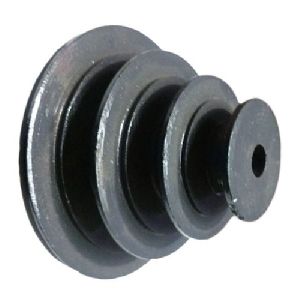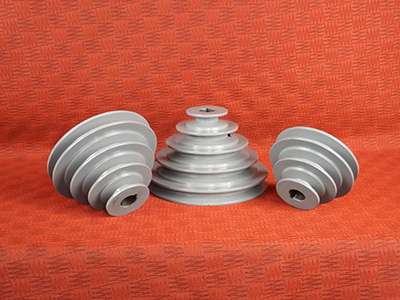Product Description
CHINAMFG produce types of gears, spur gears are the most commonly used.
Material available in steel and stainless steel
Number of teeth: 10 to 150
Modulus 1 to 5, pressure angle 20°
Advantages of Spur Gear:
- Spur gears have high power transmission efficiency.
- They are compact and easy to install.
- They offer constant velocity ratio.
- Unlike belt drives, spur gear drives have no slip.
- Spur gears are highly reliable.
Applications of Spur Gear:
- Metal cutting machines
- Power plants
- Marine engines
- Mechanical clocks and watches
- Fuel pumps
- Washing Machines
- Gear motors and gear pumps
- Rack and pinion mechanisms
- Material handling equipments
- Steel mills
- Gear boxes
Dimension A as per
Module 1 = 25 mm; Module 1.5 = 30 mm
Module 2 = 35 mm; Module 2.5 = 40 mm
Module 3 = 50 mm; Module 4 = 60 mm
Module 5 = 75 mm; Module 6 = 80 mm
Dimension B as per
Module 1 = 15 mm; Module 1.5 = 17 mm
Module 2 = 20 mm; Module 2.5 = 25 mm
Module 3 = 30 mm; Module 4 = 40 mm
Module 5 = 50 mm; Module 6 = 60 mm
Dimension B as per
Module 1 = 15 mm;
Module 1.5 = 17 mm
Module 2 = 20 mm;
Module 2.5 = 25 mm
Module 3 = 30 mm;
Module 4 = 40 mm
Module 5 = 50 mm;
Module 6 = 60 mm
| Application: | Motor, Motorcycle, Machinery, Marine, Agricultural Machinery, Industry |
|---|---|
| Hardness: | Soft Tooth Surface |
| Gear Position: | External Gear |
| Manufacturing Method: | Rolling Gear |
| Toothed Portion Shape: | Spur Gear |
| Material: | Steel 1045, S45c, C45e |
| Samples: |
US$ 3/Piece
1 Piece(Min.Order) | |
|---|
| Customization: |
Available
| Customized Request |
|---|

Can step pulleys be used in both industrial and DIY applications?
Yes, step pulleys can be used in both industrial and DIY (do-it-yourself) applications. Here’s how they are applicable in each context:
1. Industrial Applications:
Step pulleys are widely used in various industrial applications where variable speed control is required. They can be found in machinery such as milling machines, lathes, drill presses, and industrial mixers. In industrial settings, step pulleys provide a reliable and cost-effective solution for adjusting the speed of rotating components, allowing for precise control and optimal performance.
2. DIY Applications:
Step pulleys are also suitable for DIY enthusiasts and hobbyists who work with machinery or equipment that requires variable speed control. For example, in woodworking, step pulleys can be used in DIY table saws, band saws, or sanders to adjust the cutting or sanding speed according to the material and desired finish. They can also be employed in DIY metalworking projects or other applications where adjustable speed is beneficial.
3. Advantages for DIY Applications:
Using step pulleys in DIY applications offers several advantages. They provide a relatively simple and affordable means of achieving variable speed control without the need for complex electronic controls or expensive variable frequency drives. Step pulleys are easy to install and operate, making them accessible to DIYers with basic mechanical skills.
4. Limitations for DIY Applications:
While step pulleys offer flexibility in speed control, they may have limitations in terms of the available speed range and increments compared to more advanced speed control systems. Additionally, the load capacity of step pulleys may be lower compared to heavy-duty industrial machinery, so it’s important to consider the specific requirements of the DIY project and choose the appropriate pulley size and material.
Overall, step pulleys can be utilized effectively in both industrial and DIY applications to achieve variable speed control. They provide a practical and versatile solution for adjusting rotational speed, whether it’s in large-scale industrial operations or smaller DIY projects.

Can step pulleys be retrofitted into existing machinery for performance upgrades?
Yes, step pulleys can be retrofitted into existing machinery to provide performance upgrades. Retrofitting step pulleys offers a cost-effective solution to enhance the functionality and versatility of older machines. Here are some key points to consider:
1. Compatibility:
Before retrofitting step pulleys, it is important to ensure compatibility between the existing machinery and the pulley system. Consider factors such as available space, shaft diameter, and belt compatibility. Assess whether the installation of a step pulley system will fit within the existing framework of the machine.
2. Evaluation of Requirements:
Identify the specific performance upgrades you aim to achieve by retrofitting step pulleys. Determine if the existing machine’s speed range and control capabilities are limiting its functionality for certain tasks. Assess whether the addition of step pulleys will address these limitations and provide the desired performance improvements.
3. Design and Engineering:
Consult with professionals or engineers experienced in retrofitting machinery to design and engineer the step pulley retrofit solution. They can assess the feasibility, provide guidance on selecting the appropriate step pulley system, and ensure proper integration with the existing machinery.
4. Installation Process:
The installation of step pulleys typically involves disassembling certain components of the machine to access the drive system. This may require skilled personnel or technicians familiar with the specific machine. Follow proper installation procedures to ensure the pulleys are mounted securely and aligned correctly with the drive system.
5. Belt Tension and Alignment:
Proper belt tension and alignment are crucial for the smooth operation of step pulleys. Ensure that the belts are tensioned according to the manufacturer’s recommendations, and the pulleys are aligned to minimize belt slippage and maximize power transmission efficiency.
6. Testing and Calibration:
After the retrofit, thoroughly test the machine to ensure that the step pulley system functions as intended. Check for any issues such as belt slippage, unusual vibrations, or excessive noise. Make any necessary adjustments or calibrations to optimize the performance of the retrofit.
7. Safety Considerations:
During the retrofit process, prioritize safety considerations. Follow all safety guidelines and procedures to protect personnel and ensure safe operation of the machinery. This may include proper lockout/tagout procedures during installation and maintenance.
By retrofitting step pulleys into existing machinery, you can upgrade performance, add variable speed control, and enhance the versatility of the machine. However, it is essential to carefully evaluate compatibility, seek professional guidance, and follow proper installation and testing procedures to ensure a successful retrofit that meets your performance objectives.

In which industries and applications are step pulleys commonly used?
Step pulleys find widespread use in various industries and applications where adjustable speed control is required. Here are some industries and applications where step pulleys are commonly used:
1. Machine Tools:
Step pulleys are extensively used in machine tools such as drill presses, milling machines, and lathes. They allow operators to adjust the rotational speed of cutting tools, enabling precise machining operations.
2. HVAC Systems:
Heating, ventilation, and air conditioning (HVAC) systems often utilize step pulleys in blower motors and fans. These pulleys enable adjusting the speed of the fan to control airflow and temperature regulation.
3. Automotive Industry:
Step pulleys are employed in various automotive applications. They can be found in engine accessories like alternators and power steering systems, where they allow for adjustable speed control.
4. Industrial Machinery:
Step pulleys are used in a wide range of industrial machinery, including conveyors, packaging machines, textile machines, and printing presses. They provide speed variation for different production requirements.
5. Exercise Equipment:
Step pulleys are utilized in exercise equipment like treadmills, stationary bikes, and elliptical machines. They allow users to adjust the difficulty level and intensity of their workouts by changing the speed or resistance.
6. Garage Door Openers:
Step pulleys are commonly found in garage door openers. They enable smooth and controlled opening and closing of garage doors by adjusting the speed and torque applied to the door mechanism.
7. Textile Industry:
In textile manufacturing, step pulleys are used in textile machines such as spinning frames and weaving looms. They provide speed control for various stages of the textile production process.
8. Woodworking Machinery:
Step pulleys are utilized in woodworking machinery, including table saws, band saws, and sanding machines. They enable operators to adjust the speed of cutting or sanding tools for different types of wood and desired finishes.
These are just a few examples, and step pulleys can be found in numerous other industries and applications where adjustable speed control is essential.


editor by CX
2023-11-02
